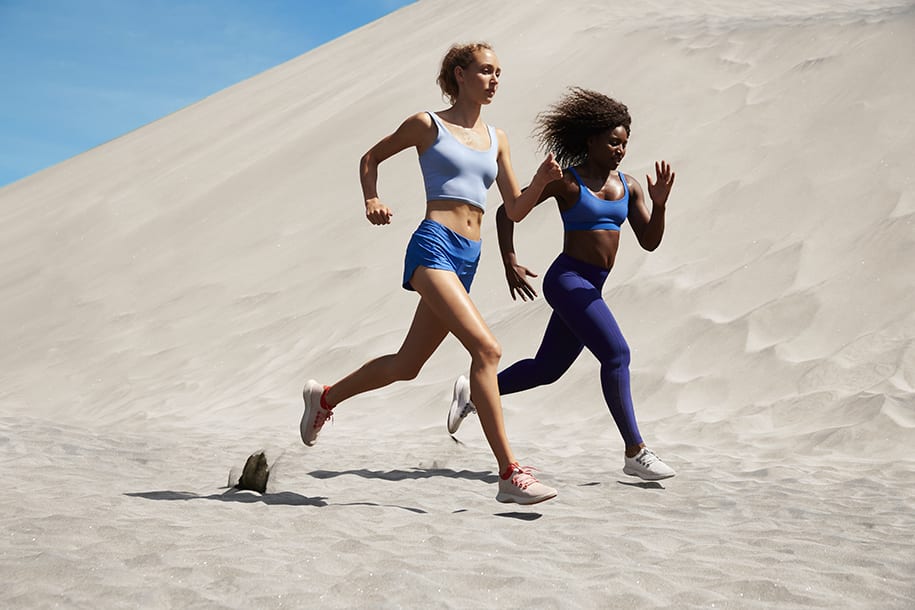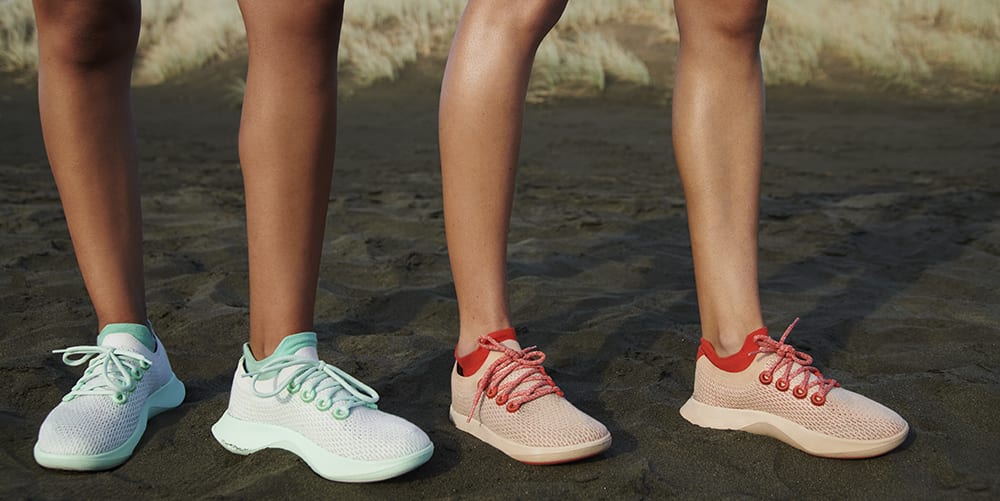If you’ve ever you popped on your favourite pair of Allbirds and wished you could go for a jog in them, now you can. The sustainably minded footwear brand has been busy in the past few months. Not only have they just launched The Dasher – the brand’s very first running shoe – they’ve also been busy working on the Carbon Count initiative – an easy way to figure out the environmental impact of each pair of Allbirds. Recently we caught up with Hana Kajimura, sustainability manager at Allbirds, to find out about the new launch, new initiative and what the future holds for the game-changing footwear brand.
Q: Where did the idea for The Dasher come from? Is it a product that Allbirds fans have been asking you to make for a while?
A: For too long, the performance industry told us that athletic footwear meant synthetic footwear. We weren’t just going to accept that athletic products had to be made from oil-based plastics in order to be technically excellent.
And on top of that, our customers had been asking us for quite a while to make running shoes – many were actually exercising in our casual sneakers already. So, two years ago we set out to make a nature-based performance product that demonstrated what was possible through innovation and expertise. The result is the Dasher!
Q: How is The Dasher different from other running shoes that are out there?
A: The Dasher provides a natural alternative to the plastic-based athletic shoes that have dominated the market for decades. For example, the product’s foundation is its re-engineered SweetFoam™ soles, which is powered by our proprietary dual-density sugarcane foam that provides just the right amount of stability and cushion for a casual run. The knitted sock upper features eucalyptus and merino wool, renewable technical materials that create our signature comfort experience. We’re incredibly proud to introduce a best-in-class running shoe built for performance that’s also made from nature.
Q: Tell us about the new Carbon Footprint initiative. You’ve drawn an analogy between nutritional information on food and CO2 emissions on clothing. What was the thinking behind this?
A: Sustainability means 10 different things to 10 different people – this makes it incredibly difficult for consumers dedicated to consuming more responsibly to know what to look for. We realised that there was a need to even the playing field and make it easy for customers to compare the impact of the things they wear and buy.
While there are so many important aspects to sustainability, we believe that climate change is the most urgent issue of our time, and carbon emissions are driving climate change. That’s why we’ve taken the radical step to label every item we make with its carbon footprint – literally the KG of carbon dioxide emitted in the production and use of the product. Our hope is that this singular metric will be able to provide clarity for consumers and will be adopted more broadly in the fashion industry and beyond. We want to do our part to ensure that one day soon, shoppers will compare carbon numbers at the mall like they do nutritional labels in grocery aisles.

Q: What impact do you see the Carbon Count having on the wider fashion industry? Do you hope and think it’s something that other brands might adopt in the future?
A: The lack of clarity around what “sustainability” actually means has allowed too many brands to get away with intentionally vague commitments, resulting in consumer fatigue and distrust. If more brands started labeling the emissions that went into their products, we’d be able to eliminate so much confusion around which brands are taking sustainability seriously. In publishing the carbon footprint, we’re accountable to showing that number come down over time. While this level of accountability is scary for a lot of businesses, we won’t see the kind of monumental change required to tackle climate change if these important benchmarks stay as murky as they are today.
Q: A Wool Runner has a footprint of 7.1kg of CO2 emissions. What does this figure take into consideration?
A: The carbon footprint takes into account the materials, manufacturing, use phase, and end of life disposal of a product. We calculate and report transportation emissions separately (since it varies so much based on where the end customer is), before we offset all emissions to zero. While it’s hard to find reliable information, we’ve calculated that an average sneaker emits around 12.5kg of carbon, so the Wool Runner is a little over 40% lower. This is a number that we’ll continually work to drive down over time, as we learn new ways to conserve carbon. That’s the beauty of using natural resources – they can eventually become climate positive through innovation, whereas synthetic, like plastic, never can.
Q: What’s the next step in the Allbirds journey towards a carbon-negative model?
A: We’re always looking for new ways to reduce our impact. Right now, we’re quite focused on regenerative agriculture – it’s an incredibly exciting field with lots of potential to naturally store carbon and increase biodiversity.
Q: How do you envision what sustainability means to Allbirds evolving in the future?
A: At Allbirds, we are constantly focusing our efforts into innovation so we can continue to get better. We are incredibly proud to be a carbon-neutral company, but we’re ultimately striving to become climate positive and actually suck more carbon out of the air than we emit. We have some exciting things on the horizon, so watch this space!




